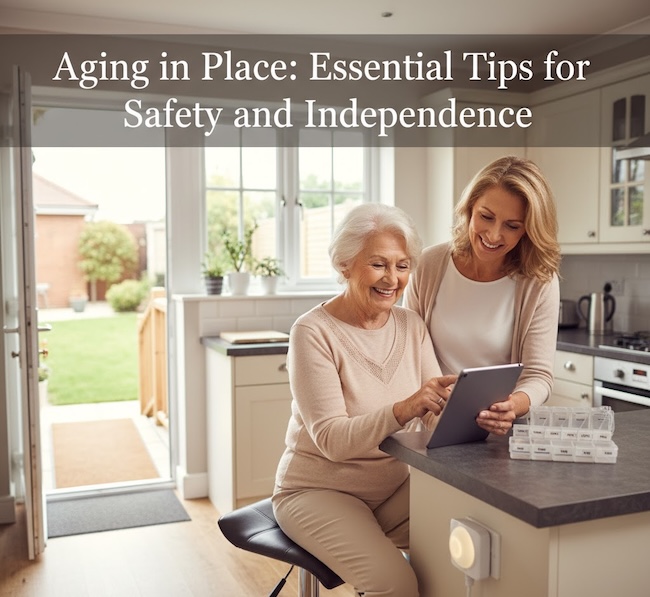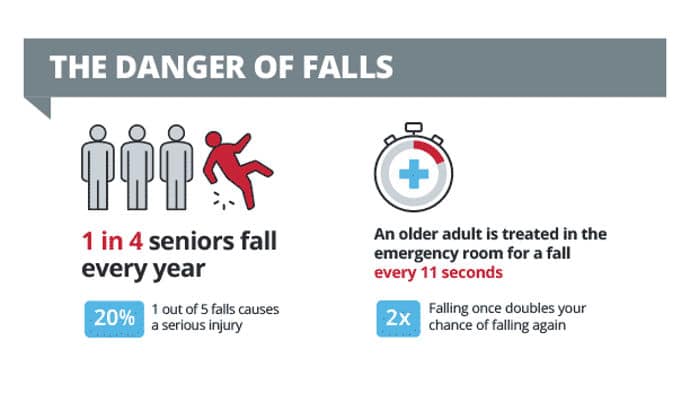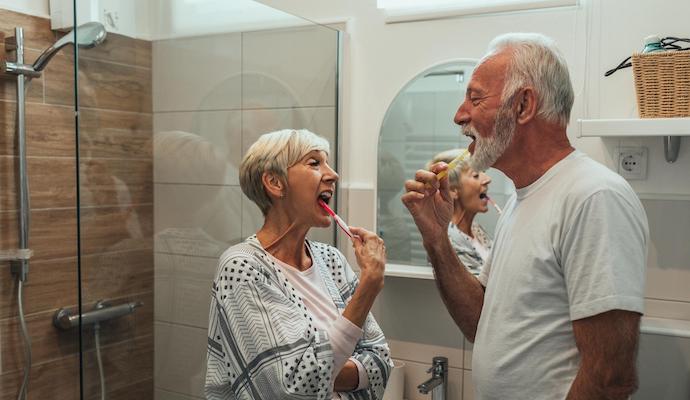 Sponsored by Jukebox Health
Sponsored by Jukebox Health
When you’re caring for an older adult, you know how overwhelming it can feel to constantly worry that they might fall at home.
To put your mind at ease and help them live independently for longer, consider aging in place home modifications that focus on preventing accidents.
While this is important for all areas of your loved one’s home, the bathroom is especially crucial because nearly one-third of all home falls occur there.
In this article, we will explain how three simple home modifications in the bathroom can improve your loved one’s safety.
With simple modifications in these key areas, you can significantly reduce fall risk, reduce fear of falling, and ultimately help your loved one gain more independence in their daily life.
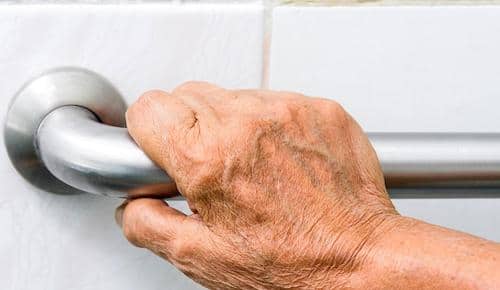
1. Add balance in the shower
Slippery tubs can be a serious hazard, especially for older adults and people with mobility issues.
Several factors can increase fall risk while using the shower or bath.
These include:
- Muscle weakness and stiff joints
- Decreased vision
- Chronic conditions like diabetes, COPD, Parkinson’s disease, and others
Fortunately, one the most effective and simple solutions to preventing falls are grab bars.
Grab bars are one of the top products to prevent falls. This is because of their ability to support balance and mobility control.
Plus, strategically placed grab bars can help your loved one get in and out of the shower more easily.
Before you shop for grab bars and consider installing them yourself, it’s important to note that you should always work with a clinical expert and handyman when implementing grab bars in the home.
This is because:
- A clinical expert, like an occupational therapist, can thoroughly assess the bathroom space and evaluate each aspect of the shower or bath to recommend the safest and most effective placement for grab bars based on your loved one’s specific height, mobility, and health concerns.
- A professional installer knows the specific protocols around properly installing grab bars and can minimize the risk of grab bars becoming loose or unsafe.
If installation is done incorrectly or if you choose an insufficient grab bar type (like a bar without wall studs), it can actually be counterproductive to your loved one’s safety and lead to a higher risk of fall or injury.
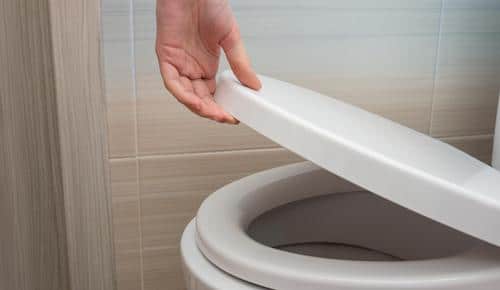
2. Improve toilet mobility
Next, if your loved one has difficulty getting on or off the toilet, a toilet seat riser can be an effective solution.
These are a big help for anyone with limited mobility, weakened leg strength, or balance issues.
Raising the toilet seat height increases overall mobility and allows anyone to use the toilet without fear or risk of falling.
If you’re unsure how to choose a suitable toilet seat riser, here are some things to keep in mind:
- Know which toilet shape your loved one has – round or elongated. This is crucial to making sure the raised seat fits properly.
- Determine if the raised toilet seat will support your older adult’s weight.
- Consider if handles are needed on the toilet riser. Handles provide added support when sitting and standing from the toilet.
- If applicable, the ADA recommends the toilet seat height be at least 17 – 19 inches to accommodate wheelchair access.

3. Eliminate tripping hazards
The third way to improve bathroom safety is to find and eliminate tripping hazards within the bathroom. One top fix is to install a graded door saddle.
Graded door saddles fix uneven floor transitions, which are the height differences between different flooring surfaces within the home.
For example, many homes have carpet that leads into a tiled bathroom. Between this flooring transition there is typically a door saddle that can vary in height.
Door saddles that have a threshold can be a significant tripping hazard and that only increases if your loved one uses a walker or wheelchair.
A graded door saddle is essentially a very small ramp between the different surface heights.
The door saddle provides a smooth transition for anyone who may have a tendency to shuffle their feet, need to roll over the area, or has declining vision that makes it harder to move safely around the home.
Home modifications increase an older adult’s ability to live independently
Home modifications for older adults are all about prevention before a fall or injury occurs.
Being proactive about your loved one’s safety in the bathroom can help them live more independently for longer and delay the need for additional care and assistance.
Depending on your loved one’s specific needs, some or all of these home safety modifications may be needed to reduce their risk of falling.
To get help deciding which home modifications would be most beneficial for your older adult, call Jukebox Health at (888)-292-2771. Our expert clinical team will be happy to schedule a free home safety checkup and find the solutions your loved one needs most based on their budget and style.
Next Step Click to schedule a free home safety checkup with Jukebox Health using the promo code SAFETY
By Daniel Elliot (OTR/L, Aging-in-Place Specialist) a Guest Contributor at Jukebox Health
About Jukebox Health: This content is a sample of Jukebox Health’s blog. Jukebox Health makes aging in place a common-sense and cost-effective option for older adults and their families. With the help of licensed therapists and trusted installers, they provide a tailored solution to improving home safety and reducing fall risk. For more information, visit www.jukeboxhealth.com and follow @jukeboxhealth on Facebook or LinkedIn.
This article is sponsored by Jukebox Health. For more information, see How We Make Money.
About the Author

Connie is the founder of DailyCaring.com and was a hands-on caregiver for her grandmother for 20 years. (Grandma made it to 101 years old!) She knows how challenging, overwhelming, and all-consuming caring for an older adult can be. She also understands the importance of support, especially in the form of practical solutions, valuable resources, and self-care tips.










